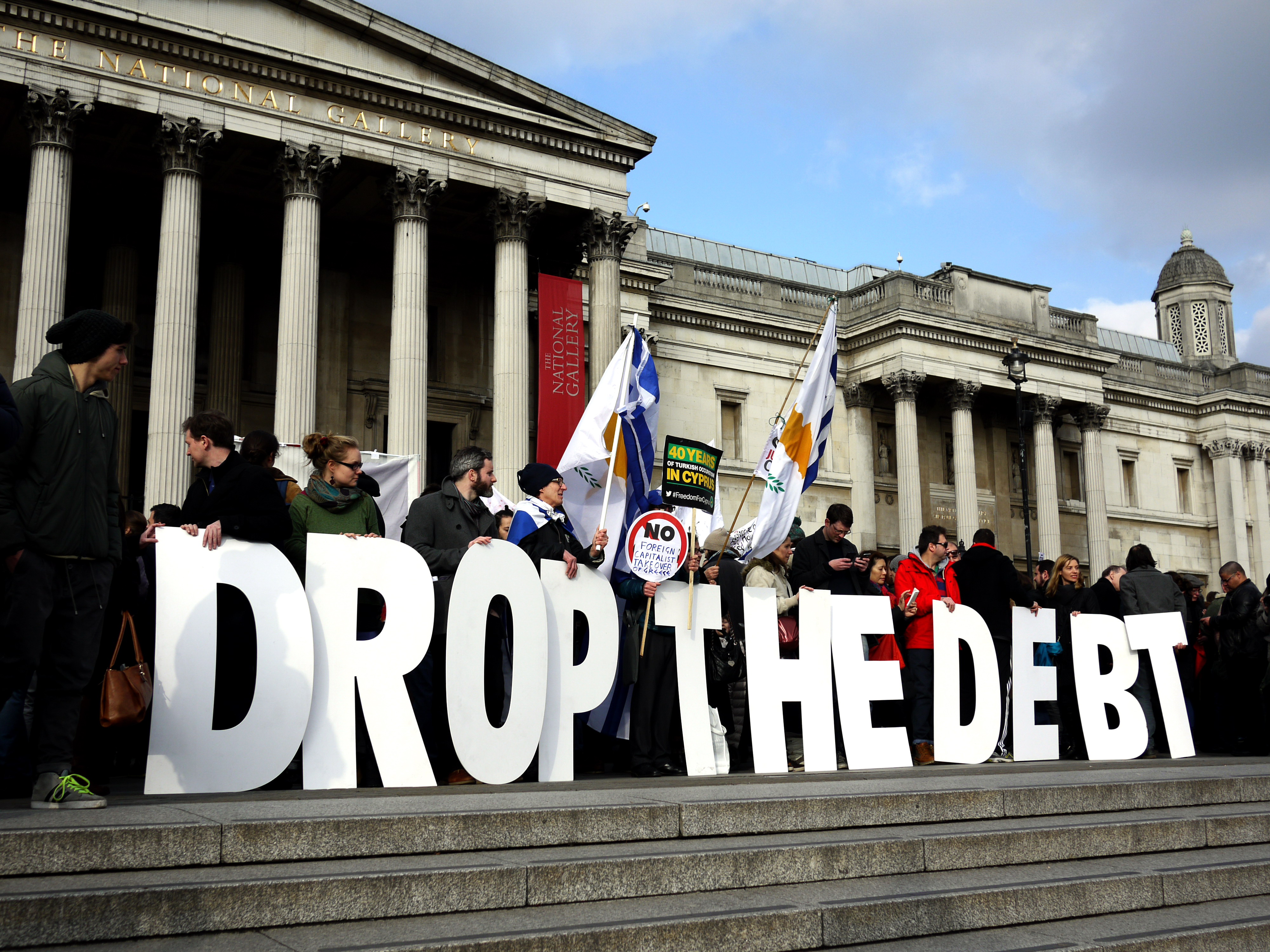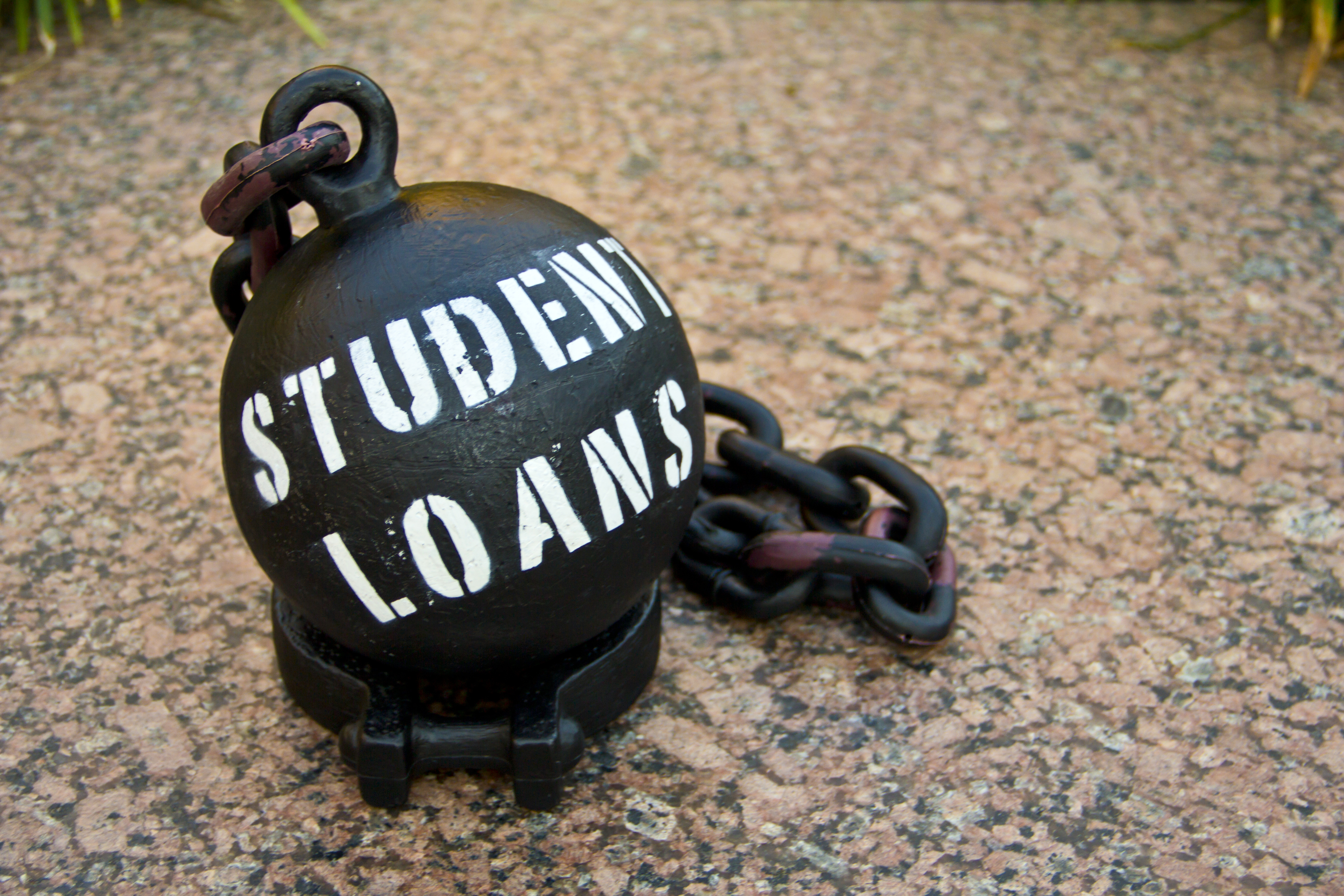Debt Buy-Backs
As the large majority of Americans face the obstacles and “chains” of different types of personal debt - court, medical, car, housing credit card, etc. - organizers have looked to using debt purchases or buy-backs as part of larger organizing goals (that also unchain people from these debts). This has looked like groups paying court fines to recover voting rights and free people from financial burdens during a global pandemic. The dominance of medical debt as one of the most significant drivers of financial hardship has made mass medical debt relief a goal. Organizers have used the raising of money for large scale medical debt buy-back as a way to bring awareness and organize towards larger solutions.

“Let Greece Breathe,” London, Feb 15, 2015. People gather around large cut-out letters that spell out “DROP THE DEPT” in Trafalgar Square, Greece. Photo via Sheila/Flickr.
One of the ways that organizers have worked to buy back medical debt is with the group RIP Medical Debt. Two former debt collectors, Craig Antico and Jerry Ashton, decided in 2014 to use their unique knowledge and position to create a way to forgive medical debt. They raised donations to buy large bundles of medical debt, and then forgave that debt with no tax consequences to donors or recipients. From this idea came RIP Medical Debt, which has eradicated $1,396,496,786 in medical debts so far, providing financial relief for over 650,000 individuals and families.
Student Loan Strike
One organization that has leveraged collective power by offering debtors a shared platform for making demands and taking direct action is the Debt Collective.

Washington, D.C. October 10, 2016. The Stop the Machine protest, also joined by already on-going Occupy DC protests (then in their sixth day), an offshoot of the Occupy Wall Street protests in New York City. Image via thisisbossi/Flickr.
“Tens of millions of us are carrying more than $1.5 trillion in student debt,” reads the Debt Collective’s website, on which one can track its campaign and sign a pledge. “Our debt is someone’s profit which also makes it a form of leverage over the government agencies and the private companies that are extracting from us. One million people default every year.”
While a large-scale student debt strike has yet to take place, The New Republic noted that the Debt Collective’s model for mass refusal has “already worked before.”

Night of the Living Debt, New York City, NY June 22, 2012. git Image via Max Lib/Flickr.
As Nick Martin reported, “Corinthian Colleges was a company that owned a slew of for-profit higher education institutions across the nation. Nathan Hornes was one of the students that Corinthian took advantage of in the United States and Canada. In 2015, Hornes and 14 other Corinthian victims took the unheard-of step of refusing to pay their student loans. The strike came amid a series of lawsuits filed against Corinthian by the states of California and Massachusetts, and it provided a beacon for the thousands of others who had been similarly preyed upon. In concert with these efforts, the strikers ultimately secured $480 million in debt relief.”